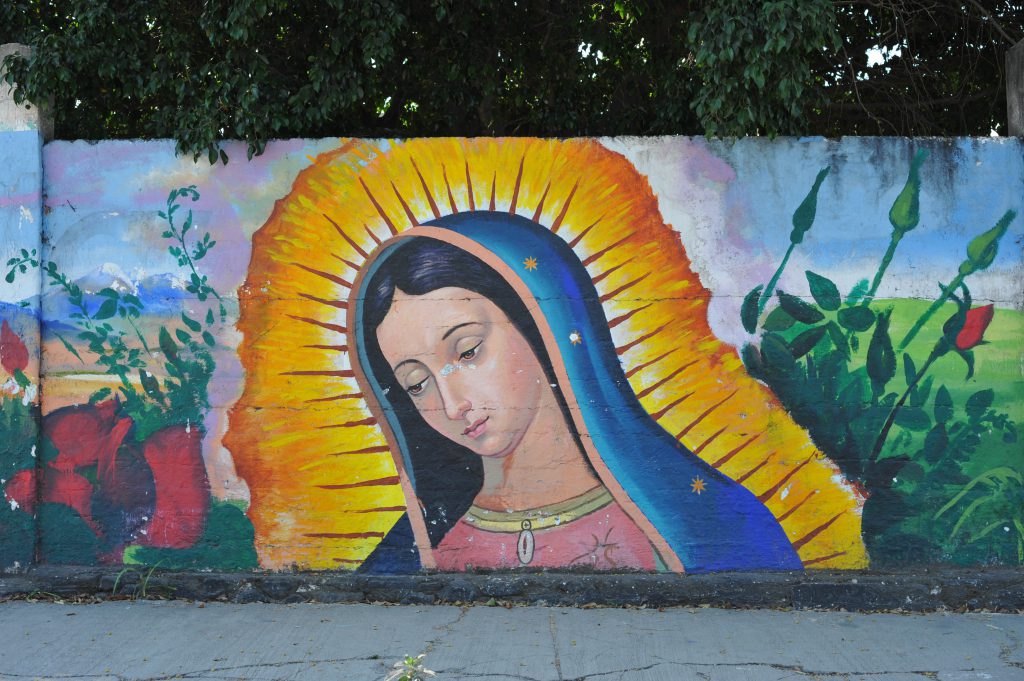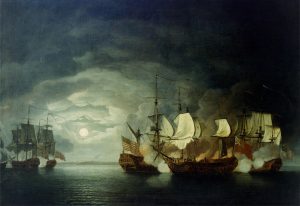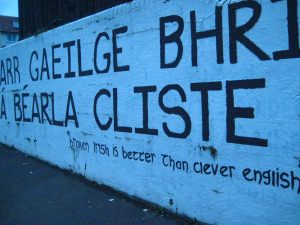Imagine waking up one day and going about your regular routine, when suddenly something happens that will not only change your life but the lives of Catholics and Mexicans forever.
At dawn on December 9, 1531, Juan Diego, who was a young Aztec Indian from the village of Cuautitlán, was on his way to attend weekly mass at the Franciscan church at Tlatelolco. He had recently converted to Catholicism, and the church was a few miles away from his uncle’s house, where he lived at after the death of his parents. While taking a shortcut over the hill of Tepeyac, he heard his name being called, and at the same time he heard music and the singing of birds.1 He followed the sounds and heard someone calling to him from the peak of the hill, “Juanito, Little Diego.” When he reached the top of the hill, he saw a young lady standing there who motioned for him to come closer: “Juanito, the smallest of my sons, where are you going?” He answered: “My Lady and my child, I have to go to your house in Mexico, Tlatelolco.” She declared herself to be “the eternal Virgin, holy Mother of the true God” and “merciful Mother” of men.2 She told Juan Diego to go to the bishop of Mexico, the Spaniard Fray Juan de Zumarraga, and tell him that she wished to have a church built on the hill of Tepeyac.3 This was the start of a life-changing moment for Juan Diego and soon, for Catholics all over the world.

Later that day, Juan Diego made his way to the bishop’s palace, which was about four miles away, and after some difficulty with the guards, he was eventually admitted to the bishop’s study, and he delivered the message from the Virgin Mary and told him everything that he admired, saw, and heard.4 The Bishop answered: “You will come again, my child, and I will think about the message you have brought.”5 Zumarraga was sympathetic but not convinced by the story that Juan Diego told him. As the first Catholic bishop of Mexico, he had heard many wild stories from converted Indians, and needed more time to think about it. In the recent decade, the colony of New Spain had been established after Hernan Cortes conquered the Aztecs in 1521. One of the goals of the Spanish was to convert the native indigenous population to Christianity. However, this was a very slow process. In many areas, the old religious practices were still being maintained a decade later. Some of the beliefs of the natives were incorporated into their own form of Christianity.6 Juan Diego left the bishop’s palace feeling very sad and returned to the hill where he had previously seen the Virgin, and explained to her what happened with the bishop, and suggested that it would be a better idea for her to send someone more important than he was to the bishop. The Virgin reassured him that he was the chosen one, and directed him to visit the bishop again the following day.7
The next day, on December 10, Juan Diego returned to the bishop’s palace and asked him if they could build the church for the Virgin Mary. The bishop asked him many questions in order to test his truthfulness, such as where he had seen her and how she looked, and Juan Diego answered everything precisely to the bishop.8 The bishop listened carefully but said he would need some proof before building a church for her. He directed Juan Diego to bring back an unmistakable sign for the validation of the apparitions that occurred. After Juan Diego left, the bishop then sent two of his staff to follow him and report back what they had seen. Juan Diego went back to the hill at Tepeyac and the staffers that were following him lost sight of him and returned back to the bishop’s palace. Meanwhile, Juan Diego had seen the Virgin Mary again, and told her the answer that the bishop had given him. She told him to come back the following day and she would give him a sign for the bishop.9
When he returned home, Juan Diego found his uncle, Juan Bernardino, seriously ill and at the point of dying. He nursed him all through the night. In the morning, he decided to call on a priest from the church at Tlatelolco to administer the last rites, as his uncle’s health was not improving. Juan Diego was worried that he had failed to meet with the Virgin Mary, and took the longer and lower road to Tlatelolco instead of the shortcut over the hill of Tepeyac. But the Virgin appeared on the lower path and told him that there was no need to worry about his uncle Bernardino, whom she had visited and was now cured. She then told Juan to go back to the top of the hill, where he would find many flowers growing. His mission was to pick a bunch of the flowers, wrap them in his cloak, and take them to the bishop. The Virgin stressed that these flowers must be concealed and not shown to anyone else.10

The top of the hill was not a place where flowers would usually grow, because of thorns, thistles, cactus, and small weeds. And it was the month of December, when everything is killed by the frost. However, he found some beautiful and fragrant roses growing, so he picked a bunch, wrapped them in his cloak, and headed down towards the Virgin to show her what he had discovered. The Virgin took them in her hands and told him that this bunch of flowers was the proof that he needed to show the bishop, and in showing him, the bishop would believe all that Juan Diego had said.11 He picked up the bunch of flowers, wrapped them in his cloak, and headed towards the bishop’s palace one last time, and upon arrival, the guards demanded to know what he was carrying in his cloak. The guards could smell the flowers and when they opened the cloak, the roses were fresh, fragrant, fully open, and precious. They took the cloak away from Juan and attempted to grab some of the flowers, but once they had opened it again and reached to grab some, the roses had become painted flowers on the inside of the cloak. They took Juan to the bishop and when he unfolded his white cloak to the bishop, the fresh roses spilled out onto the floor. When the various roses fell on the floor, the bishop saw that on the inside of the cloak where the flowers once had been, a portrait of the Virgin Mary appeared.12

When the bishop and all that were present saw this image, they fell to their knees in admiration. The bishop took the cloak to his chapel, where he then prayed and thanked God and the Virgin for the miracle. The bishop, astounded by this miracle, asked to be taken to where Juan Diego had seen the Virgin Mary. Upon arrival at the hill of Tepeyac, the bishop ordered that the church that the Virgin Mary had requested to be built would indeed be built, and would be named “The Basilica of Our Lady of Guadalupe,” which is located in present-day Mexico City. The cloak with the picture of Our Lady of Guadalupe can be found at this church that was built in her honor.13
It has been said that the dark-skinned image of Mother Mary as a virginal Native American girl helped the Spanish priests convert millions of Mexican Indians to Catholicism.14 Occasionally, we encounter a symbol that seems to enshrine the major hopes and aspirations of an entire society. Such a master symbol is represented by the Virgin of Guadalupe, Mexico’s patron saint. Her image was not only used during wars and battles as a figure of protection, but is also still used to adorns house fronts, churches and home altars, restaurants, and so much more. Her shrine at Tepeyac is visited each year by hundreds of thousands of pilgrims that all go to honor her.15 To the present day, Our Lady of Guadalupe remains a powerful symbol of Mexican identity and faith, and her image is associated with everything from motherhood to feminism to social justice. Her image has often graced the banners of those struggling for Mexican independence, and she has been understood by many devotees to side with oppressed and poor people. Mexican immigrants to the United States brought with them their devotion to her—privately and affectionately called “La Morenita”—and have helped to perpetuate her identification with others.16 After the apparitions of the Virgin Mary occurred, many Catholics began to honor her and see her as their own mother, especially Mexicans since they often refer to her as “nuestra Madre” or “Our Mother” and adopted her as their own. The feast of Our Lady of Guadalupe is celebrated every December 12, which became a national holiday in Mexico in 1859, and she has been recognized as the patron saint of Mexico.17

- Encyclopedia of Occultism and Parapsychology, 2001, s.v. “Guadalupe Apparitions (of the Virgin Mary)”, by J. Gordon Melton. ↵
- Samuel Marti, The Virgen of Guadalupe and Juan Diego (Ediciones Euroamericanas, 1973), 36-38. ↵
- Encyclopedia of Occultism and Parapsychology, 2001, s.v. “Guadalupe Apparitions (of the Virgin Mary)”, by J. Gordon Melton. ↵
- Encyclopedia of Occultism and Parapsychology, 2001, s.v. “Guadalupe Apparitions (of the Virgin Mary)”, by J. Gordon Melton. ↵
- Samuel Marti, The Virgen of Guadalupe and Juan Diego (Ediciones Euroamericanas, 1973), 39. ↵
- Global Events: Milestone Events Throughout History, 2014, s.v. “The Virgin of Guadalupe Appears to Juan Diego”, by Jennifer Stock. ↵
- Encyclopedia of Occultism and Parapsychology, 2001, s.v. “Guadalupe Apparitions (of the Virgin Mary)”, by J. Gordon Melton. ↵
- Samuel Marti, The Virgen of Guadalupe and Juan Diego (Ediciones Euroamericanas, 1973), 43. ↵
- Encyclopedia of Occultism and Parapsychology, 2001, s.v. “Guadalupe Apparitions (of the Virgin Mary)”, by J. Gordon Melton. ↵
- Encyclopedia of Occultism and Parapsychology, 2001, s.v. “Guadalupe Apparitions (of the Virgin Mary)”, by J. Gordon Melton. ↵
- Samuel Marti, The Virgen of Guadalupe and Juan Diego (Ediciones Euroamericanas, 1973), 48. ↵
- Encyclopedia of Occultism and Parapsychology, 2001, s.v. “Guadalupe Apparitions (of the Virgin Mary)”, by J. Gordon Melton. ↵
- Global Events: Milestone Events Throughout History, 2014, s.v. “The Virgin of Guadalupe Appears to Juan Diego”, by Jennifer Stock. ↵
- The Gale Encyclopedia of the Unusual and Unexplained, 2003, s.v. “Virgin of Guadalupe,” by Brad Steiger and Sherry Hanson Steiger. ↵
- Eric R. Wolf, “The Virgin of Guadalupe: A Mexican National Symbol,” The Journal of American Folklore 71, no. 279 (1958): 1. ↵
- Contemporary American Religion, 1999, s.v. “Virgin of Guadalupe,” by Sandra L. Zimdars-Swartz. ↵
- Contemporary American Religion, 1999, s.v. “Virgin of Guadalupe,” by Sandra L. Zimdars-Swartz. ↵



103 comments
Kendall Guajardo
I loved this article! I have heard of many miracles witnessed but never this story. Our Lady of Guadalupe is so important to the catholic faith and I am really glad to see an article honoring her. I particularly liked the part where you referenced her being symbolic of feminism and I think this is so important for anybody who is religious to know. The fact is, there is so much controversy around organized religion today and if churches are harboring oppressive, criminal acts. While there is an air of male dominance in the church, many forget that Our Lady of Guadalupe is a model for morality, justice, and motherly affection. It is a shame that this facet of the church is not explored as much but she is perhaps the most significant figure besides God and Jesus.
Nathaniel Bielawski
I think that Mary’s appearance to Juan Diego was a turning point for the Catholic Church in Mexico. Because of Mary, many of the peoples in the area would convert to Catholicism and honor her. She is most definitely our mother and the queen of the universe, whose only son died on the cross to save us.
Mia Hernandez
Being raised Catholic and being a Hispanic, the Virgin de Guadalupe or the Virgin Mary is a large part of the religion and culture that I grew up in. But even though I was surrounded by people who knew her story, I did not. This article taught me a lot about her backstory and about Juan Diego and the adversity he had to go through when telling his story to the bishop.
Giselle Garcia
This article explained very beautifully the events of the Virgin Mary appearing to Juan Diego and what unfolded afterwards. Juan Diego was determined to get his message to the bishop to have a church built at the hill of Tepeyac, even though he was faced with the challenges of his father’s illness and the bishop’s doubts. My favorite part was when Juan Diego brought roses in his tilma to the bishop as proof, as it was an astonishing miracle that finally convinced the bishop to build the church. Now, numerous amounts of people visit that basilica, and the image of Our Lady of Guadalupe has influenced Mexican and Catholic tradition since.
Sara Guerrero
The Virgin Mary is forever embedded in the culture and society in Mexico. I love the story of Juan Diego and how the Virgin Mary gave him a mission and even though at the point where he thought he failed her she showed care and love which is why she is portrayed as a motherly figure. I would live to see the cloak one day and I did hear a story of how acid was accidently spilled on the cloak and nothing happened to it as well as other stories. Beautiful story and great article!
Zachary Kobs
This article was very moving and a great read. In my culture and family, the Virgin Mary has primarily been a symbol of nurturing and eternal love. Her greatest symbols are flowers and that is why I found the part where he presented the flowers to the Bishop so moving as they unfolded to reveal a portrait of the Virgin Mary herself.
Jacqueline Mendez
The virgin Mary has become such a symbol to my culture and my family. This a very beautiful story and this article made justice to that story by being written in such a beautiful way. I hope this article wins and it represents an entire culture and nation .
Cristianna Tovar
Congratulations on your nomination, Nicole! Although I am very familiar with Mary, the Virgin of Guadalupe, I had no idea about the backstory of how she influenced Mexican culture. I can’t imagine how amazing it would feel to be in her presence like Juan Diego did. I’m glad that the bishop got to see for himself that Juan was telling the truth because it changed Catholic and Mexican culture forever. Great job and good luck at the awards ceremony!
Kimberly Parker
Although not a lot of people believe in Juan Diego’s story about the Virgin Mary, Diego still manages to make the establishment of the church possible. The themes of persistence and faith stand out from the story a lot. From a normal person’s perspective, it can be seen that they normally wouldn’t believe in religious or mysterious stories, like the bishop of Mexico, Spaniard Fray Juan de Zumarraga, who doesn’t believe in Diego at first. Diego is able to overcome many obstacles that were thrown at him like the doubts from others and his uncle’s sickness, he was finally successful in convincing Zumarraga to build the Basilica of Our Lady of Guadalupe. Also, the idea of “the chosen one” is really interesting to read since it is contradicted by most of the common beliefs that are being shared in our society. It is nice to think about all those meaningful religious stories and how they are stemmed from unreal ideas and magical characters.
Michael Thompson
As a Catholic, who was raised in an area predominantly with people from Mexican lineage, I ended up learning a lot about Our Lady of Guadalupe. I learned it like any other story, except this one seemed to be more important. And now my family still goes to the feast of our lady of Guadalupe mass every year. It’s a big deal, and rightfully so, for the catholic and Mexican tradition.